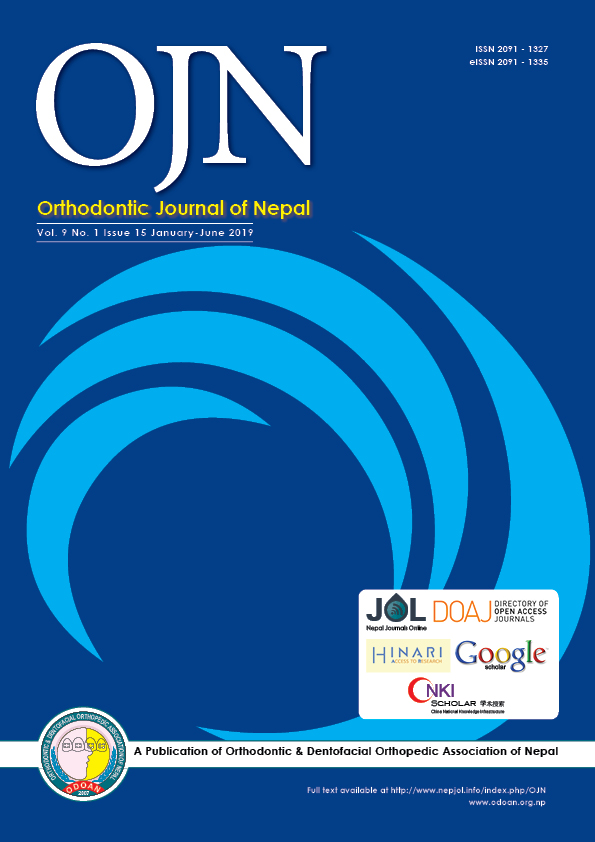Study of Cleft Lip and Palate in Kathmandu Model Hospital, Nepal
DOI:
https://doi.org/10.3126/ojn.v9i1.25682Keywords:
cleft lip, cleft lip and palate, cleft palate, congenital anomalies, craniofacial malformations, orofacial defectsAbstract
Introduction: Cleft lip and/or palate is a congenitally persistent space affecting orofacial region. It is generally divided into cleft lip (CL), cleft palate (CP) and cleft lip with cleft palate (CLP). The objective of the study was to evaluate distribution of patterns of orofacial clefts according to sex and laterality; predisposing factors and other congenital anomalies associated with cleft lip and/or palate.
Materials & Method: A cross-sectional descriptive type of study was carried out using in 268 patients having cleft lip and/or palate. Types of clefts, predominance of sex and laterality, familial history, associated anomalies and drug and disease history of mother were recorded.
Result: The results revealed 23.51% CL, 54.85% CLP and 21.64% CP. There were 58.21% males and 41.79% females. Positive family history of cleft was present in 28.0% and associated anomalies were observed in 3.7% of the cleft subjects. Mothers of 6.0% of the total patients were exposed to teratogenic agents during first trimester of pregnancy.
Conclusion: It was concluded that among the three types of cleft (CL, CP and CLP), CLP is the most common type. The males are affected more with cleft lip and/or palate than the females. Clefts also have risks of associated congenital anomalies. Exposure to teratogenic agents in first trimester of pregnancy is also associated with orofacial cleft.
Downloads
Downloads
Published
How to Cite
Issue
Section
License
Copyright © held by Orthodontic & Dentofacial Orthopedic Association of Nepal
- Copyright on any research article is transferred in full to the Orthodontic & Dentofacial Orthopedic Association of Nepal upon publication in the journal. The copyright transfer includes the right to reproduce and distribute the article in any form of reproduction (printing, electronic media or any other form).
- Articles in the Orthodontic Journal of Nepal are Open Access articles published under the Creative Commons CC BY License (https://creativecommons.org/licenses/by/4.0/)
- This license permits use, distribution and reproduction in any medium, provided the original work is properly cited.




